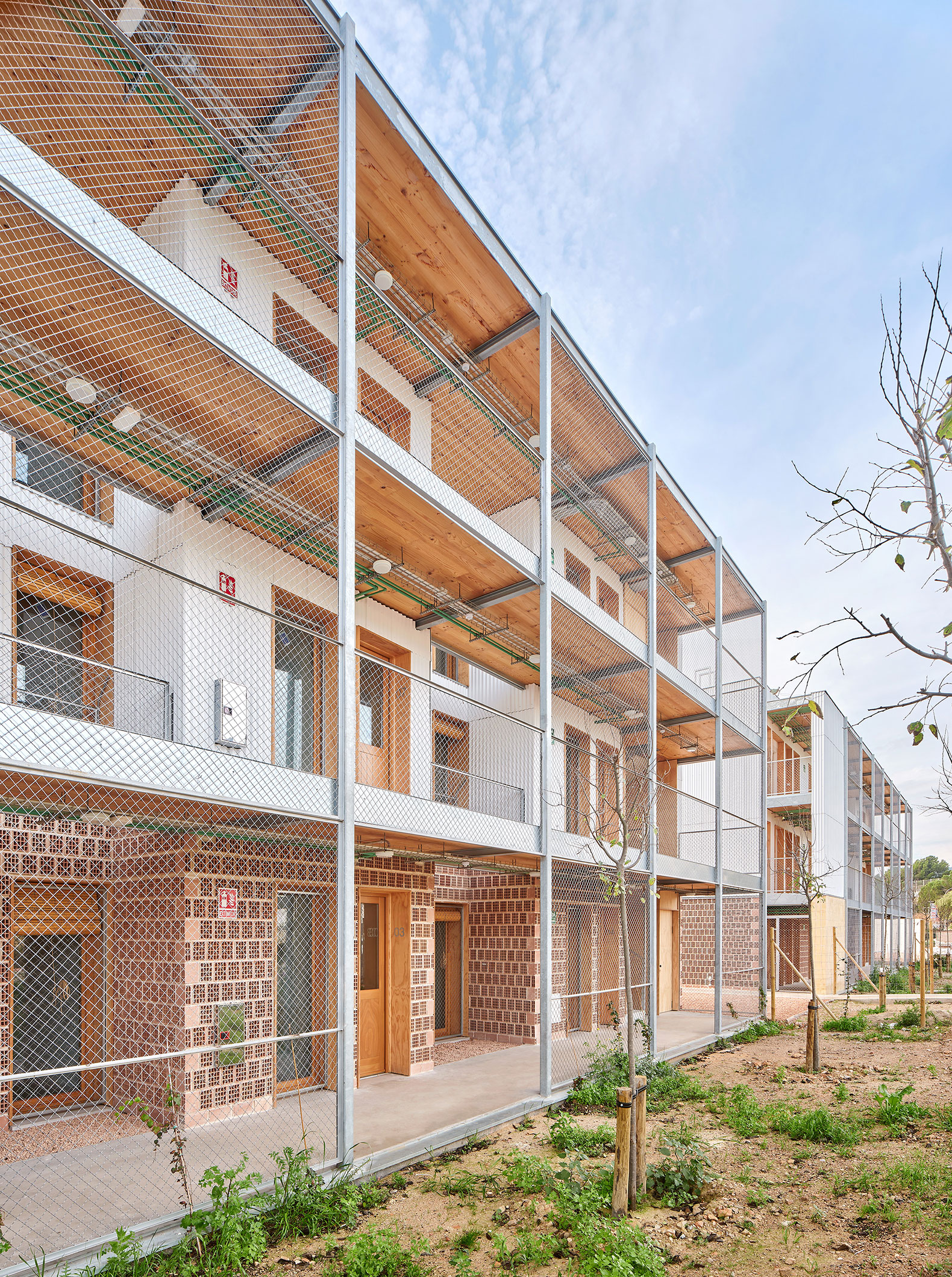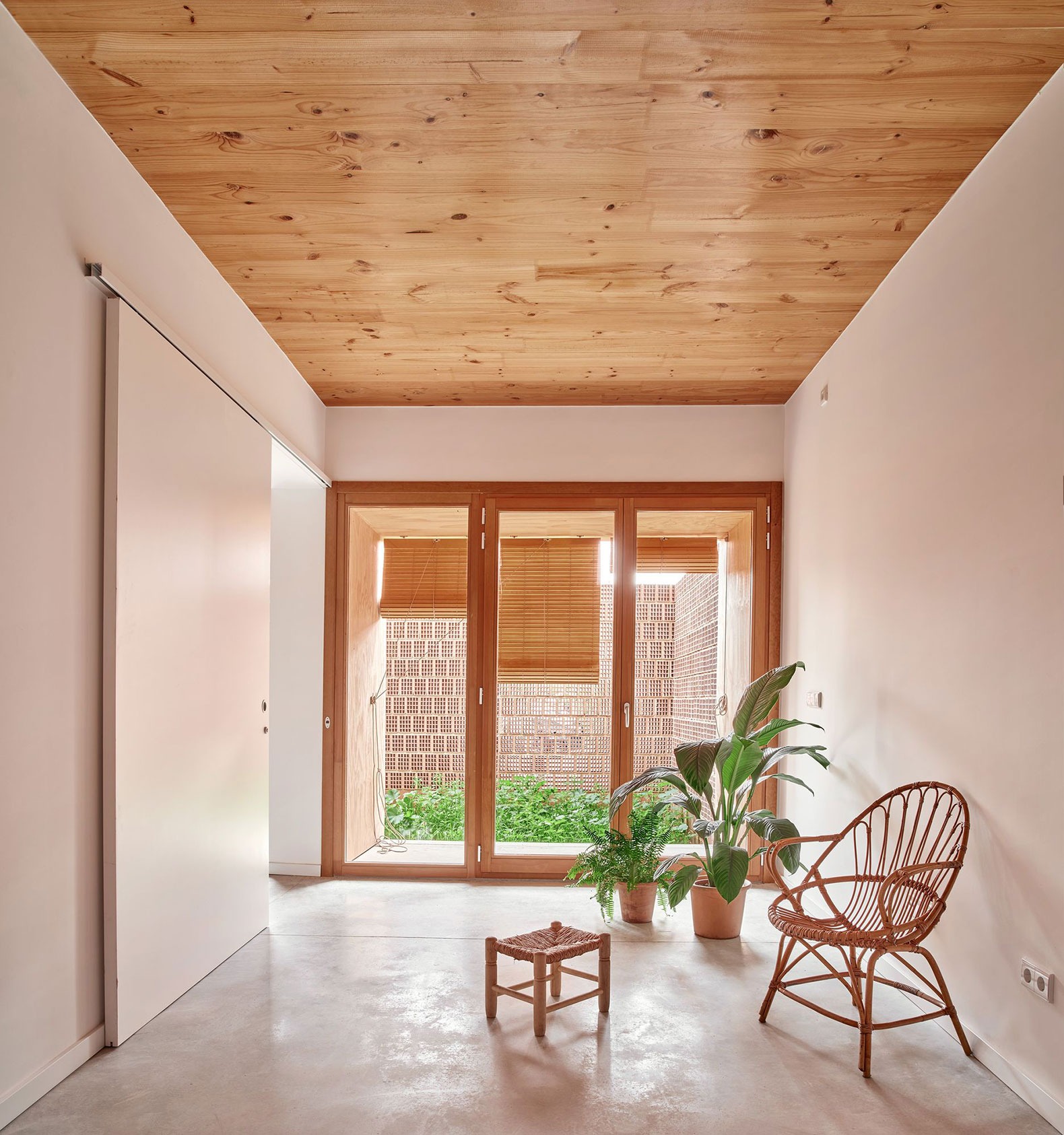
The housing complex designed by Lloc Arquitectes is organised into two independent areas of 24 apartments and a car park, each divided into two blocks of 12 apartments spread over three floors above ground level. All the apartments face south, favouring and enhancing cross ventilation with the correct sizing of the openings to ensure control of solar radiation and privacy through a system of roller shutters.
Taking into account sustainability and environmental impact criteria, locally manufactured brick walls are used on the ground floor, while on the upper levels cross-laminated timber (CLT) walls are chosen. This is an organic and light material that, in addition to reducing construction times and waste, generates healthy spaces with a very positive environmental impact on the entire building.

48 Social housing units in Magaluf, Calvià by Lloc Arquitectes. Photograph by José Hevia.
Project description by Lloc Arquitectes
The project includes the construction of a total of 48 homes and a car park. The proposal is organised into two independent areas of 24 homes each, divided into 2 blocks of 12 flats with 2 floors.
The volumes are arranged on the ground floor with a southerly orientation, seeking optimal sunlight and the use of sea breezes, leaving a wide strip for landscaping and planting trees in the southern part of the plot, which favours the connection with the existing public open space and allows for controlling the views towards the leisure area and commercial establishments.

Environmental strategy
More than 30% of CO2 consumption comes from the construction process.
The aim of the project in terms of environmental strategy is to take measures in this regard as well as reduce consumption during its useful life, favouring good climate comfort through the following strategies:
Laminated wood structure from certified forests. Not only is it a sustainable material, but as it is a prefabricated system, it significantly reduces the construction period.
Passive ventilation and lighting systems favouring cross ventilation of the building, improving the quality of the incoming air with the vegetation and enhancing the entry of natural light and the prevailing winds through the height difference between volumes.
Shading mechanisms. The terraces of the buildings extend into the building, creating porches that let the sun in during the winter and protect the homes from radiation in the summer. A system of wooden roller shutters allows the degree of comfort and privacy to be adjusted.

The homes
Orientation: All the homes face south and have access to a terrace that allows sunlight in the winter and acts as a shade in the summer, facilitating solar protection with a system of roller shutters.
Cross ventilation: All the homes are pass-through. The diagonal relationship between the rooms as well as the size of the openings in the façade favours the circulation of air in the direction of the prevailing winds, guaranteeing natural ventilation.
Diagonals and views: The diagonal relationship of the spaces enhances the continuous view on both sides of the house and allows for a more flexible relationship between the different pieces that make it up, connecting the rooms with each other.

Materiality
Local ceramics
The project uses local ceramics as a structural element on the ground floors and to close off patios and enclosures.
Wood
A laminated wood structure is proposed on the upper floors, offering comfort, healthy spaces and having a very positive environmental impact on the building as a whole (organic and light material).
A house built with solid wood elements can store four times more carbon than a traditional one, so the building will be climate neutral. As it is a prefabricated material, construction time is sped up and its lightness allows the size of the foundations to be reduced.



























































